Professions of the future: 3D printing in medicine
Hello, Habr!
3D printing is slowly penetrating our lives, as it once was with mobile phones and even earlier with computers. Now, however, we are much less surprised at some innovations in the field of IT. You probably have not forgotten the news that told about a vertebra printed on a 3D printer and implanted in a living person. Closer is the time when parts of bodies and organs can be literally printed.
New opportunities open up new requirements for specialists. I deliberately did not touch on
“external” prosthetics , since this is a separate and very complex topic.
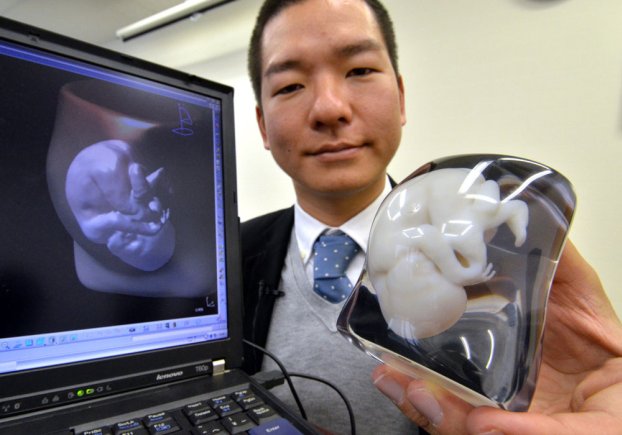
In 2012, the first operation to implant the implant of the lower jaw, printed on a 3D printer, took place. The material is titanium. Artist - LayerWise.
This summer, two more “lucky” became the owners of new lower jaws. One of them lost its jaw due to a tumor, and the second broke it. Apparently, very strong, so they could not collect.
These are dental surgeons from Kimberley Hospital.
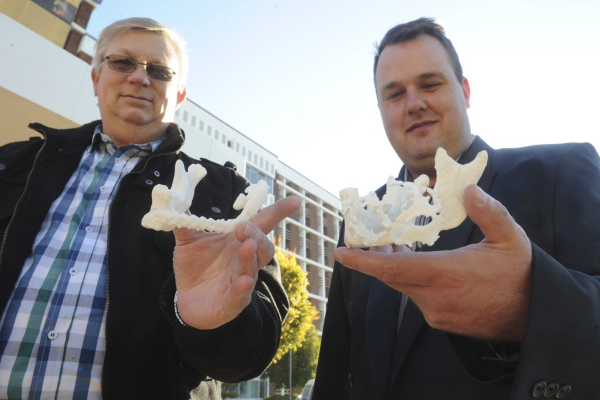
3D printing technology in dentistry has been used since 1999. The pioneer in this area is Align Technology, which has begun the production and sale of dental caps as an alternative to braces.
Problems with intervertebral discs are a fairly common thing. Recently, I also encountered it: I, as a neurologist claims, one of the cervical vertebrae is beveled, that is, somehow it was “shy” and is standing incorrectly. The result of sports. But Plushenko, after all, somehow continues to ride with an artificial vertebra - and alive.
The crown of development in this area is the recent operation of Beijing scientists on the spine of a 12-year-old boy with a malignant tumor of the spinal cord. The material from which the vertebra was made is porous, so scientists do not have to change the vertebra: it will simply become overgrown with bone tissue, that is, it will become an integral part of the body.
The only negative, except for a bunch of pluses: rehabilitation will take a little longer than using traditional materials.
Using volume printing, 75% of the patient's skull was replaced . A good indicator. This operation took place on March 4, 2013 in the USA, it was done after two weeks of work with a scanned model of the patient’s skull. The result repeats the smallest details of the form.
According to Oxford Performance Materials, between 300 and 500 people in the United States each month can become patients who require such operations. These include victims of traffic accidents, military personnel and cancer patients with a tumor in the skull.
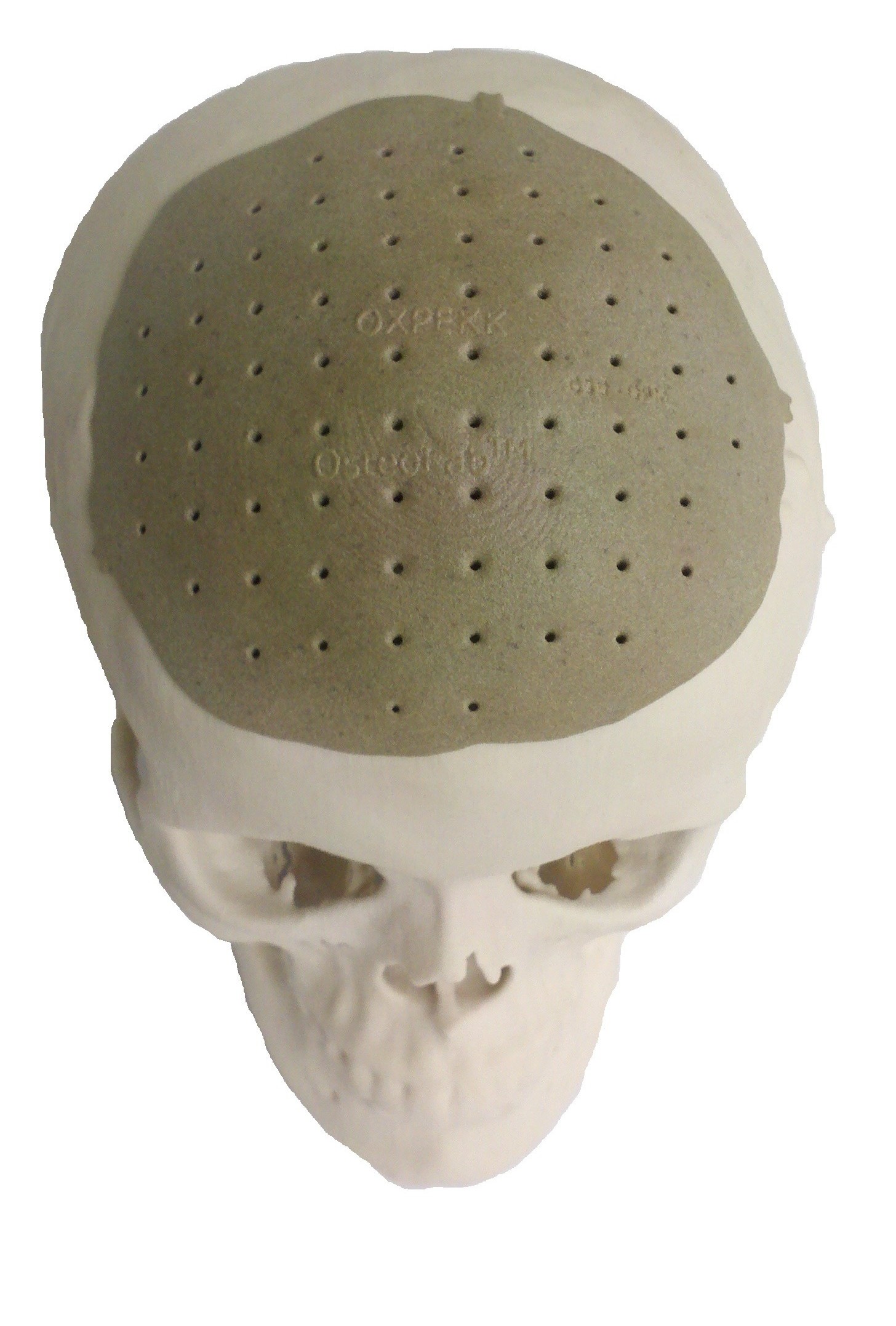
Why is 3D printing so effective in terms of bone prosthetics?
1) Speed. Using traditional prosthesis casting technologies is a long process.
2) Lightness. The weight, by the way, can be adjusted by changing the porosity of the titanium prosthesis.
3) Porosity. It is this quality that allows the prosthesis to “grow” with living tissue faster.
This June, several operations were performed in China, in which the clavicle, scapula and right ilium of the pelvis were implanted. Indications for surgery are cancerous tumors.
This is a prosthetic scapula printed on a printer.
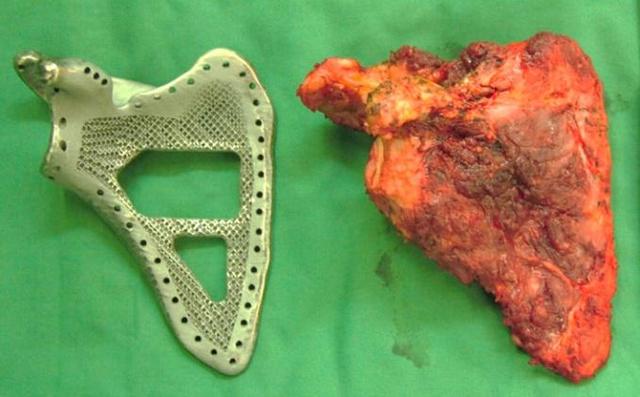
And here in the hands of doctors we see not a prosthesis, but a 3D model of the pelvis. Having such a model in front of our eyes, doctors were able to work faster and more efficiently during the operation.
At the beginning of this year, the first person appeared in the United States who was implanted with a knee joint printed on a 3D printer.
What is better than conventional implants? The essence lies in the "little things": usually a prosthesis is selected for prosthetics of the knee joint, after which the bone is sharpened to approach it. In the case of printing, the developers took the results of computed tomography and made a joint that would fit this patient as naturally as possible.
She was engaged in this work of the Conformis companies. According to Mike Myers, who now walks normally and even plays golf, rather than stopping every quarter, he does not feel a foreign body in his body.
Another important difference of this type of joints from the classic steel and plastic: the "classics" will have to be changed in 10-20 years.

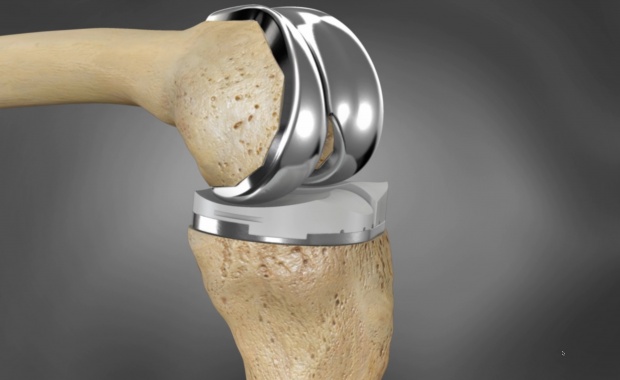
In Britain this year, an operation was performed to replace the hip joint with a printed one. The 71-year-old grandmother was raised to her feet. The material is again titanium powder.


And this is not just a shell, but a real bionic ear. Only the person has not yet been sewn.
This device, made with the participation of living human cells, contains an inductive radio antenna. This is still a concept that will be worked on. It was created to test the use of nanoelectronics in 3D printing.

For drug research in 2013, scientists were able to print liver tissue on a 3D printer. The material used was hepatocytes, stellate cells, and epithelial cells lining blood vessels.
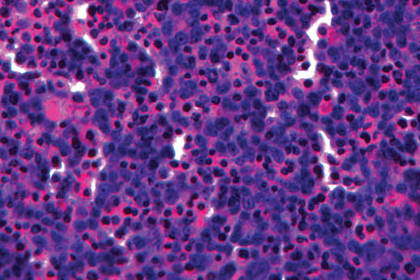
The bioprinting process.
The main problem at the moment of using 3D printing in organ prosthetics is blood supply. After all, every cell in the tissues is located next to the capillaries. So far, scientists have not solved this problem.
The idea on the surface: printing orthopedic insoles on a 3D printer after scanning becomes very easy and fast.
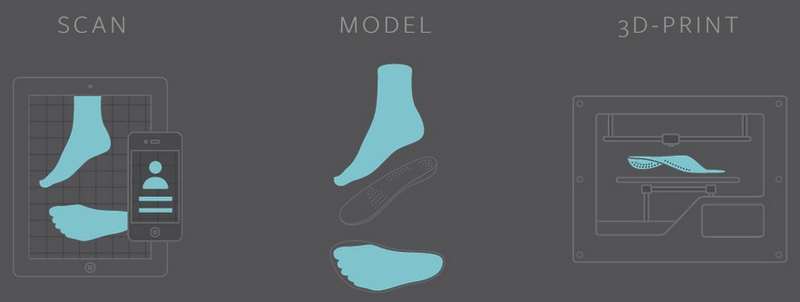
Having a 3D model in front of your eyes, it will be much easier for surgeons to navigate inside a living person during an operation.
Moreover, when the operation is performed on a little girl whose cancer is found to be inoperable. The tumor of a twelve-year-old girl whose models we see in these images was too close to the spine and was also surrounded by healthy tissues, organs, veins and arteries. This dangerous operation was successful because the doctors used this printed 3D model and carefully planned the operation with its help.
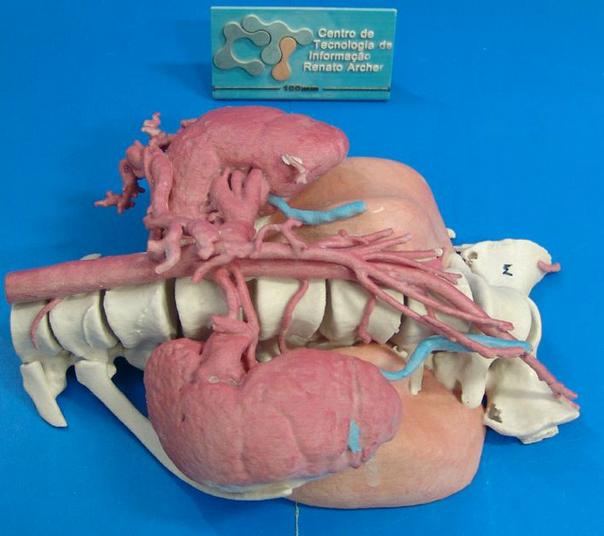
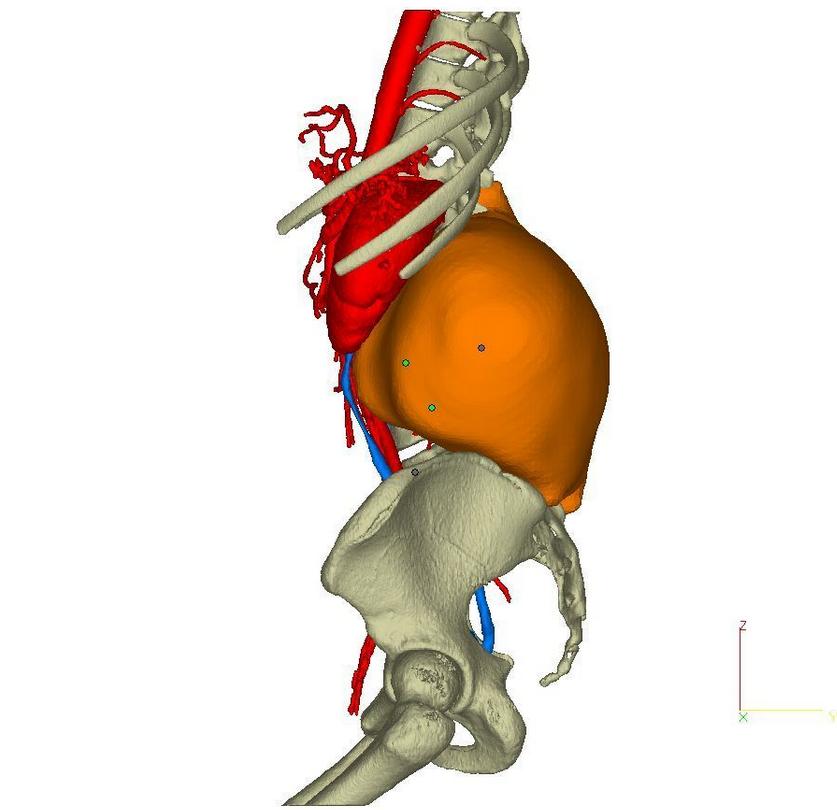
A library of 3D heart layouts from around the world is also being assembled now. A printed heart also helps doctors plan the operation, because it is one thing to see the results of the scan, and the other is to keep them in full size.
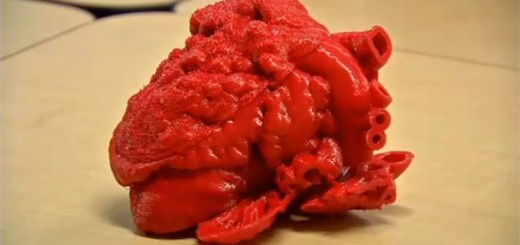
3D printing in the field of medicine has not yet reached its full potential. Many are sure that on the way - the printing of organs in real time. Perhaps before this there are 10-12 years. So the doctors will not wait for the donor to have an accident, leaving behind a heart: the doctors will just take the necessary tests and print the right organ.
The history of volume printing from the 1980s leads us to this opportunity. And then new jobs and opportunities for doing business are created: companies whose purpose is to help surgeons in performing operations, developing and creating new types of prostheses and researching materials, as well as testing drugs and creating bioprinting fabrics for this.
New opportunities and trends give rise to new requirements for specialists. This is how the profession of “bio-architects” appears in the field of 3D printing.
The organs of each person are far from the same, and injuries during transplantation can be reduced by adjusting the size and unique features of the new organ. If we can print a new organ, then we can use in it all the best features of the old organ, but at the same time fix the flaws. It turns out that we need a specialist who knows medicine, anatomy, knows how to work with 3D models, understands 3D printing and is able to literally modify a new printable organ.
3D printing is slowly penetrating our lives, as it once was with mobile phones and even earlier with computers. Now, however, we are much less surprised at some innovations in the field of IT. You probably have not forgotten the news that told about a vertebra printed on a 3D printer and implanted in a living person. Closer is the time when parts of bodies and organs can be literally printed.
New opportunities open up new requirements for specialists. I deliberately did not touch on
“external” prosthetics , since this is a separate and very complex topic.

Dentistry
In 2012, the first operation to implant the implant of the lower jaw, printed on a 3D printer, took place. The material is titanium. Artist - LayerWise.
This summer, two more “lucky” became the owners of new lower jaws. One of them lost its jaw due to a tumor, and the second broke it. Apparently, very strong, so they could not collect.
These are dental surgeons from Kimberley Hospital.

3D printing technology in dentistry has been used since 1999. The pioneer in this area is Align Technology, which has begun the production and sale of dental caps as an alternative to braces.
Spine
Problems with intervertebral discs are a fairly common thing. Recently, I also encountered it: I, as a neurologist claims, one of the cervical vertebrae is beveled, that is, somehow it was “shy” and is standing incorrectly. The result of sports. But Plushenko, after all, somehow continues to ride with an artificial vertebra - and alive.
The crown of development in this area is the recent operation of Beijing scientists on the spine of a 12-year-old boy with a malignant tumor of the spinal cord. The material from which the vertebra was made is porous, so scientists do not have to change the vertebra: it will simply become overgrown with bone tissue, that is, it will become an integral part of the body.
The only negative, except for a bunch of pluses: rehabilitation will take a little longer than using traditional materials.
Skull
Using volume printing, 75% of the patient's skull was replaced . A good indicator. This operation took place on March 4, 2013 in the USA, it was done after two weeks of work with a scanned model of the patient’s skull. The result repeats the smallest details of the form.
According to Oxford Performance Materials, between 300 and 500 people in the United States each month can become patients who require such operations. These include victims of traffic accidents, military personnel and cancer patients with a tumor in the skull.

Other bones
Why is 3D printing so effective in terms of bone prosthetics?
1) Speed. Using traditional prosthesis casting technologies is a long process.
2) Lightness. The weight, by the way, can be adjusted by changing the porosity of the titanium prosthesis.
3) Porosity. It is this quality that allows the prosthesis to “grow” with living tissue faster.
This June, several operations were performed in China, in which the clavicle, scapula and right ilium of the pelvis were implanted. Indications for surgery are cancerous tumors.
This is a prosthetic scapula printed on a printer.

And here in the hands of doctors we see not a prosthesis, but a 3D model of the pelvis. Having such a model in front of our eyes, doctors were able to work faster and more efficiently during the operation.
Joints
At the beginning of this year, the first person appeared in the United States who was implanted with a knee joint printed on a 3D printer.
What is better than conventional implants? The essence lies in the "little things": usually a prosthesis is selected for prosthetics of the knee joint, after which the bone is sharpened to approach it. In the case of printing, the developers took the results of computed tomography and made a joint that would fit this patient as naturally as possible.
She was engaged in this work of the Conformis companies. According to Mike Myers, who now walks normally and even plays golf, rather than stopping every quarter, he does not feel a foreign body in his body.
Another important difference of this type of joints from the classic steel and plastic: the "classics" will have to be changed in 10-20 years.


In Britain this year, an operation was performed to replace the hip joint with a printed one. The 71-year-old grandmother was raised to her feet. The material is again titanium powder.


Auricle
And this is not just a shell, but a real bionic ear. Only the person has not yet been sewn.
This device, made with the participation of living human cells, contains an inductive radio antenna. This is still a concept that will be worked on. It was created to test the use of nanoelectronics in 3D printing.

Liver
For drug research in 2013, scientists were able to print liver tissue on a 3D printer. The material used was hepatocytes, stellate cells, and epithelial cells lining blood vessels.

The bioprinting process.
The main problem at the moment of using 3D printing in organ prosthetics is blood supply. After all, every cell in the tissues is located next to the capillaries. So far, scientists have not solved this problem.
Orthopedic products
The idea on the surface: printing orthopedic insoles on a 3D printer after scanning becomes very easy and fast.

Help during operations
Having a 3D model in front of your eyes, it will be much easier for surgeons to navigate inside a living person during an operation.
Moreover, when the operation is performed on a little girl whose cancer is found to be inoperable. The tumor of a twelve-year-old girl whose models we see in these images was too close to the spine and was also surrounded by healthy tissues, organs, veins and arteries. This dangerous operation was successful because the doctors used this printed 3D model and carefully planned the operation with its help.


A library of 3D heart layouts from around the world is also being assembled now. A printed heart also helps doctors plan the operation, because it is one thing to see the results of the scan, and the other is to keep them in full size.

3D printing in the field of medicine has not yet reached its full potential. Many are sure that on the way - the printing of organs in real time. Perhaps before this there are 10-12 years. So the doctors will not wait for the donor to have an accident, leaving behind a heart: the doctors will just take the necessary tests and print the right organ.
The history of volume printing from the 1980s leads us to this opportunity. And then new jobs and opportunities for doing business are created: companies whose purpose is to help surgeons in performing operations, developing and creating new types of prostheses and researching materials, as well as testing drugs and creating bioprinting fabrics for this.
New opportunities and trends give rise to new requirements for specialists. This is how the profession of “bio-architects” appears in the field of 3D printing.
The organs of each person are far from the same, and injuries during transplantation can be reduced by adjusting the size and unique features of the new organ. If we can print a new organ, then we can use in it all the best features of the old organ, but at the same time fix the flaws. It turns out that we need a specialist who knows medicine, anatomy, knows how to work with 3D models, understands 3D printing and is able to literally modify a new printable organ.
